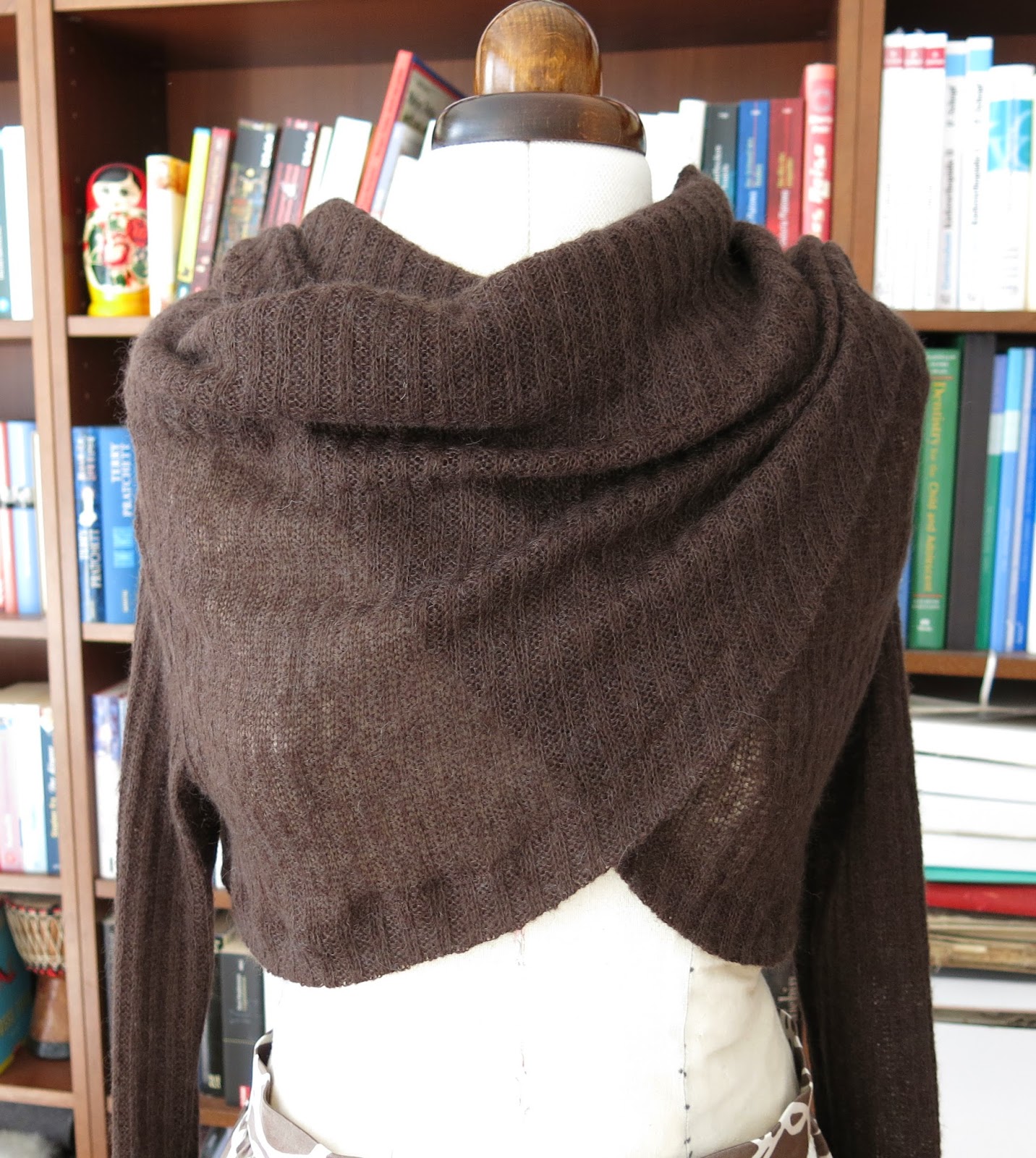Im Mai war ich zu zwei Hochzeiten eingeladen, und bei einer von beiden wurde auf der Einladungskarte für die Feier am Abend "Black Tie" gewünscht, also brauchte ich ein entsprechendes Kleid. Da es ja eine Hochzeit war, habe ich von der Farbe schwarz eher abgesehen, und ausserdem wollte ich das Kleid nur knielang haben, nicht bodenlang. Und ich musste schnell sein da nicht mehr viel Zeit war zum Nähen (ich bin mir aber sicher, dass Einkaufen auch nicht schneller gewesen wäre). Also habe ich mir mein Kleid aus schon mal genähten Schnittmustern zusammen gesetzt.
I used Burdastyle 08/2010 for the bodice, which I had already used for my Vienna gala evening dress. This pattern features a short tulip skirt, but I am not so much in tulip skirts, so I used the skirt part of another Burda dress (Burdastyle 11/2007) instead.
Für das Oberteil habe ich den Schnitt aus der Burdastyle 08/2012 verwendet, mit dem ich auch schon mein Wiener Abendkleid genäht habe. Dieser Schnitt sieht einen knielangen Tulpenrock vor, aber Tulpenröcke sind nicht so mein Fall, also habe ich statt dessen den Rockteil eines anderen Burda-Kleides (Burdastyle 11/2007) verwendet.
As for the bodice, I did not have enough time to add boning all around as I did for my Vienna gala dress with all the additional work that means. I was worried, though, that the back would crinkle or collapse as it is attached to the shoulder straps on very small points near the center back, so I added some spiral steel boning to the side seams and vertical back seams, while using the seam allowances of the lining as boning cases.
Ich hatte nicht genügend Zeit, um wie bei dem Wiener Abendkleid das ganze Oberteil mit Stäbchen zu verstärken. Befürchtete aber doch, dass es sich am Rücken zusammenstauchen würde, da hier das Oberteil nur an zwei kleinen Stellen an der Rückenmitte mit den Trägern verbunden ist. Darum habe ich eine schnelle Variante gewählt und nur in die Seitennähte und die hinteren Teilungsnähte des Innenfutters Spiralstäbchen eingebaut. Dafür habe ich die Nahtzugaben als Tunnel verwendet.
The fabric is silk dupioni, which is a dream to work with, apart from that it frays like nothing. On some parts, my seam allowances were reduced to about half the width after trying on the dress one single time!
Bei dem Stoff handelt es sich um Dupion-Seide, die sich sehr gut näht, aber ausfranst wie nix Gutes. An manchen Stellen war die Nahtzugabe bis auf die Hälfte reduziert, nur nach einmal Anprobieren!
I underlined all of the bodice parts with silk organza. The skirt was underlined with some really stiff petticoat tulle - and embellished with some trim at the hem seam to hide the frayed fabric edge.
Um alles insgesamt etwas stabiler zu machen, habe ich das Oberteil komplett mit Seidenorganza unterlegt. Der Rockteil hat einen steifen Petticoat-Tüll als Unterlage bekommen und wurde an der inneren Saumkante mit etwas Spitze verziert, hauptsächlich um die Fransen an der Stoffkante zu verstecken.
Here is the back view with the huge ties - luckily I can put the dress on and off without untying those, so that I don't have to make the knot in my back.
Und hier ist die Rückenansicht mit der riesigen "Schleife", die eigentlich gar keine ist. Glücklicherweise kann ich das Kleid an- und ausziehen, ohne den Knoten zu öffnen, so dass ich ihn nicht im Rücken binden muss.

See how nicely the back bodice is held up by the boning?
I am so happy with this dress - and felt totally appropriately dressed in it!
Die Stäbchen im Rücken scheinen zu funktionieren!
Ich war letzten Endes ziemlich zufrieden mit dem Kleid - und fühlte mich auch angemessen gekleidet darin!































